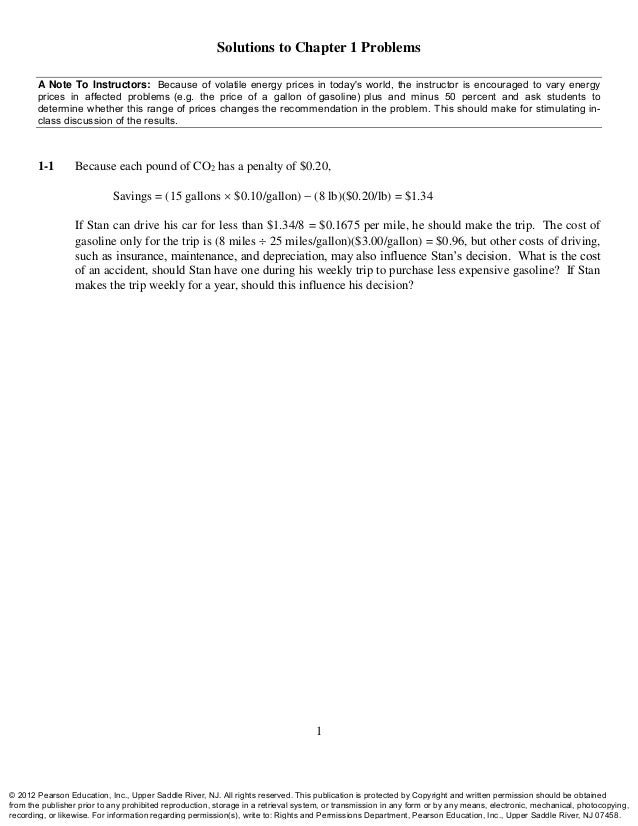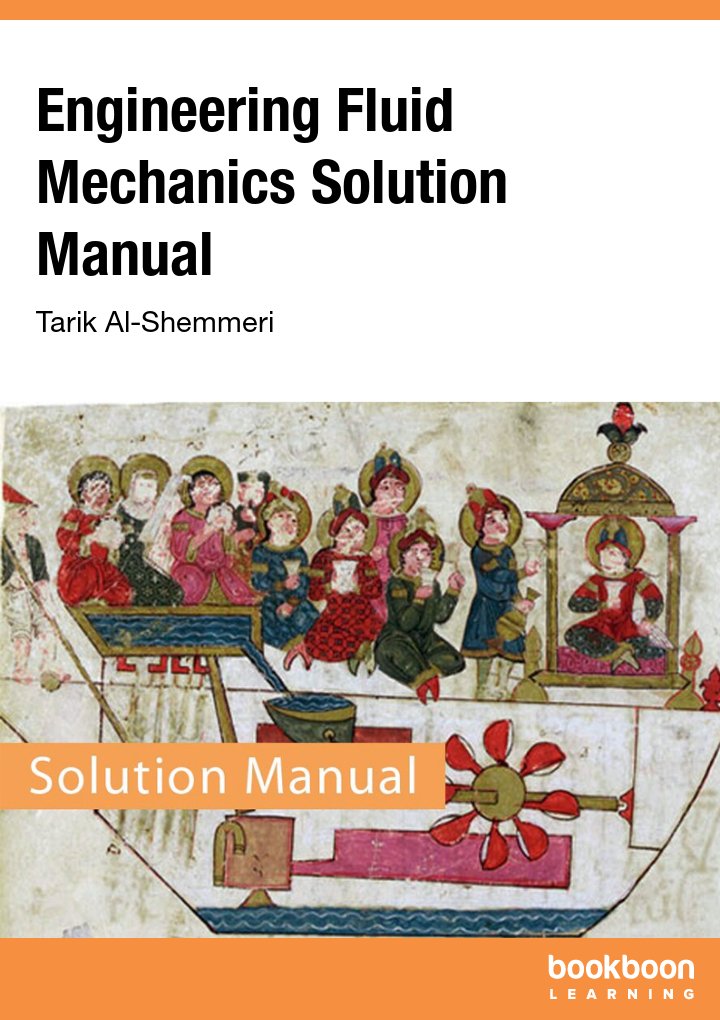Solution Manual Cases In Engineering Economy 2nd
THE BASICS OF ENGINEERING ECONOMY Engineering is the profession in which a knowledge of the mathematical and natural science gained by study, experience and practice is applied with judgement to develop ways to utilize, economically the materials and forces of nature for the benefit of mankind. In this definition, the economic aspects of engineering are emphasized, as well as the physical aspects. Clearly, it is essential that the economic part of engineering be accomplished well. In manufacturing, engineering is involved in every detail of a product’s production, from the conceptual design to the shipping. In fact, engineering decisions account for the majority of product costs. Engineers must consider the effective use of capital assets such as building and machinery. One of the engineer’s primary tasks is to plan for the acquisition of equipment (capital expenditure) that will enable the firm to design and produce products economically.

Engineering economy is the discipline concerned with the economic aspect of engineering. It involves the systematic evaluation with the economic merits of proposed solutions to the engineering problems. To be economically acceptable (i.e., affordable), solutions to engineering problem must demonstrate a positive balance of long term benefits over long term cost. Engineering economics is the application of economic techniques to the evaluation of design and engineering alternatives.
Engineering Economy Solutions Manual 5th
The role of engineering economics is to assess the appropriateness of a given project, estimate its value, and justify it from an engineering standpoint. The General Economic Environment There are numerous general economic concepts that must be taken into account in engineering studies. Engineering Economy Page 1 Consumer goods and services are those products or services that are directly used by people to satisfy their wants. Examples are foods, clothing, homes, cars, haircuts and medical services. Producer goods and services are used to produce consumer goods and services and other producer goods. Examples are machine tools, factory buildings, buses and farm machinery.
Price of goods and services is defined to be the present amount of money or its equivalent which is given in exchange for it. Demand is a quantity of certain commodity that is bought at a certain price at a given place and time.
Supply is a quantity of a certain commodity that is offered for sale at a certain price at a given place and time. Perfect competition occurs in a situation in which any given product is supplied by a large number of vendors and there is no restriction in additional suppliers entering the market. Perfect monopoly exists when a unique product or service is available from a single supplier and that vendor can prevent the entry of all others into the market. Oligopoly occurs when there are few suppliers and any action taken by anyone of them will definitely after the course of action of the others. Total Revenue is the product of the selling price per unit and the number of units sold. Total Cost is the sum of the fixed costs and the variable costs. Profit/ Loss is the difference between total revenue and the total costs.
Cost Terminology Cost considerations and comparisons are fundamental aspects of engineering practice. Before the study of various engineering economic decisions problems, the concept of various costs must be understand. At the level of plant operations, engineers must make decisions involving materials, plant facilities and the in-house capabilities of company level.
Engineering Economy Page 2 Fixed costs are those unaffected by changes in activity level over a feasible range of operations for the capacity or capability available. Examples are insurance and taxes on facilities, general management and administrative salaries, license fees, and interest costs on borrowed capital. Variable costs are those associated with an operation that vary in total with the quantity of output or other measures of activity level.
Examples are the costs of material and labor used in a product or service. Incremental cost is the additional cost (or revenue) that results from increasing the output of the system by one or more units. Recurring costs are those that are repetitive and occur when an organization produces similar goods or services on a continuing basis. Nonrecurring costs are those which are not repetitive even though the total expenditure may become cumulative over a relatively short period of time. Direct costs are costs that can be reasonably measured and allocated to a specific output or work activity. Examples are labor and material costs.
Engineering Economy 2nd Edition Solutions
Indirect costs are those that are difficult to attribute or allocate to a specific output or work activity. Examples are the costs of common tools, general supplies, and equipment maintenance.
Overhead cost consists of plant operating costs that are not direct labor or direct material costs. Examples are electricity, general repairs, property taxes and supervision. Standard costs are representative costs per unit of output that are established in advance of actual production or service delivery. Cash costs are that involves payment of cash. Noncash costs (book costs) are costs that does not involve a cash payment, but rather represent the recovery of past expenditures over a fixed period of time. Example is the depreciation charged. Engineering Economy Page 3 Sunk cost is one that has occurred in the past and has no relevance to estimates of future costs and revenues related to an alternative course of action.
Opportunity cost is incurred because of the use of limited resources such that the opportunity to use those resources to monetary advantage in an alternative use is foregone. Life-cycle cost refers to a summation of all the costs, both recurring and nonrecurring, related to product, structure system, or services during its life span.
Investment cost is the capital required for most of the activities in the acquisition phase. Working capital refers to the funds required for current assets that are needed for the startup and support of operational activities. Operational and Maintenance cost includes many of the recurring annual expense items associated with the operation phase of the life cycle. Disposal cost includes those nonrecurring costs of shutting down the operation and the retirement and disposal of assets at the end of the life cycle. These costs will be offset in some instances by receipts from the sale of assets with remaining value. Economic life coincides with the period of time extending from the date of acquisition to the date of abandonment, demotion in use, or replacement from the primary intended service.
Ownership life is the period between the date of acquisition and the date of disposal by a specific owner. Physical life is the period between original acquisition and final disposal of an asset over the succession of owner.
Study for the 2016 paralegal study guide. Useful life is the time period that an asset is kept in productive service (either primary or backup). It is an estimate of how long an asset is expected to be used in a trade or business to produce income. Engineering Economy Page 4 Chapter 1 The Economic Environment Engineering economy is the analysis and the evaluation of the factors that will affect the economic success of engineering projects to the end that a recommendation can be made which will insure the best use of capital. CONSUMER AND PRODUCER GOODS AND SERVICES Consumer goods and services are those products or services that are directly used by people to satisfy their wants Producer goods and services are used to produce consumer goods and services or other producer goods.
NECESSITIES AND LUXURIES Necessities are those products or services that are required to support human life and activities that will be purchased in somewhat the same quantity even though the price varies considerably. Luxuries are those products or services that are desired by humans will be purchased if money is available after the required to support human life and activities that will be purchased in somewhat the same quantity even though the price varies considerably. DEMAND Demand is the quantity of a certain commodity that is bought at a certain price at a given place and time.
Elastic demand occurs when a decrease in selling price result in a greater than proportionate increase in sales. Inelastic demand occurs when a decrease in selling price produces a less than proportionate increase in sales. Unitary elasticity of demand occurs when the mathematical product of volume and price is constant.
Engineering Economy Page 5 PRICE PRICE FIGURE 1-1.General PricedemandFIGURE 1-2. Price-demand relationship forrelationship luxuries and necessities Competition, Monopoly and Oligopoly Perfect competition occurs in a situation where a commodity or service is supplied by a number of vendors and there is nothing to prevent additional vendors entering the market.
What are Chegg Study step-by-step Basics Of Engineering Economy 2nd Edition Solutions Manuals? Chegg Solution Manuals are written by vetted Chegg 18 experts, and rated by students - so you know you're getting high quality answers. Solutions Manuals are available for thousands of the most popular college and high school textbooks in subjects such as Math, Science (, ), Engineering (, ), and more. Understanding Basics Of Engineering Economy 2nd Edition homework has never been easier than with Chegg Study. Why is Chegg Study better than downloaded Basics Of Engineering Economy 2nd Edition PDF solution manuals?
It's easier to figure out tough problems faster using Chegg Study. Unlike static PDF Basics Of Engineering Economy 2nd Edition solution manuals or printed answer keys, our experts show you how to solve each problem step-by-step. No need to wait for office hours or assignments to be graded to find out where you took a wrong turn.
You can check your reasoning as you tackle a problem using our interactive solutions viewer. Plus, we regularly update and improve textbook solutions based on student ratings and feedback, so you can be sure you're getting the latest information available.

How is Chegg Study better than a printed Basics Of Engineering Economy 2nd Edition student solution manual from the bookstore? Our interactive player makes it easy to find solutions to Basics Of Engineering Economy 2nd Edition problems you're working on - just go to the chapter for your book. Hit a particularly tricky question? Bookmark it to easily review again before an exam. The best part? As a Chegg Study subscriber, you can view available interactive solutions manuals for each of your classes for one low monthly price. Why buy extra books when you can get all the homework help you need in one place?
Comments are closed.